| Common name | Scientific name and subspecies | Range | Size and ecology | IUCN status and estimated population |
|---|
| Alaska tiny shrew
| S. yukonicus
Dokuchaev, 1997 | Alaska
 | Size: 4–10 cm (2–4 in) long, plus 2–9 cm (1–4 in) tail [102]
Habitat: Inland wetlands [103]
Diet: Insects, worms, and other invertebrates, as well as small vertebrates, carrion, and plants [104] | LC
Unknown  [103] [103]
|
|---|
| Alpine shrew
| S. alpinus
Schinz, 1837 | Europe
 | Size: 6–8 cm (2–3 in) long, plus 5–8 cm (2–3 in) tail [105]
Habitat: Forest, grassland, and rocky areas [106]
Diet: Insects, arachnids, snails, and earthworms [105] | NT
Unknown  [106] [106]
|
|---|
| American pygmy shrew
| S. hoyi
Baird, 1857 | Northern North America
 | Size: 5–6 cm (2 in) long, plus 2–4 cm (1–2 in) tail [107]
Habitat: Forest, shrubland, grassland, and inland wetlands [108]
Diet: Insects and other invertebrates [107] | LC
Unknown  [108] [108]
|
|---|
| American water shrew  | S. palustris
Richardson, 1828 | North America
 | Size: 7–9 cm (3–4 in) long, plus 5–9 cm (2–4 in) tail [109]
Habitat: Forest and inland wetlands [110]
Diet: Aquatic insects and fish, as well as other invertebrates and plants [109] | LC
Unknown  [110] [110]
|
|---|
| Apennine shrew
| S. samniticus
Altobello, 1926 | Italy
 | Size: 4–10 cm (2–4 in) long, plus 2–9 cm (1–4 in) tail [102]
Habitat: Shrubland and forest [111]
Diet: Insects, worms, and other invertebrates, as well as small vertebrates, carrion, and plants [104] | LC
Unknown  [111] [111]
|
|---|
| Arctic shrew
| S. arcticus
Kerr, 1792 | Northern North America
 | Size: 6–8 cm (2–3 in) long, plus 3–5 cm (1–2 in) tail [112]
Habitat: Forest and inland wetlands [113]
Diet: Insects and other invertebrates [112] | LC
Unknown  [113] [113]
|
|---|
| Arizona shrew
| S. arizonae
Diersing & Hoffmeister, 1977 | Northern Mexico and southern United States
 | Size: 4–10 cm (2–4 in) long, plus 2–9 cm (1–4 in) tail [102]
Habitat: Forest and inland wetlands [114]
Diet: Insects, worms, and other invertebrates, as well as small vertebrates, carrion, and plants [104] | LC
Unknown  [114] [114]
|
|---|
| Azumi shrew
| S. hosonoi
Imaizumi, 1954 | Japan
 | Size: 4–10 cm (2–4 in) long, plus 2–9 cm (1–4 in) tail [102]
Habitat: Forest, shrubland, and grassland [115]
Diet: Insects, worms, and other invertebrates, as well as small vertebrates, carrion, and plants [104] | LC
Unknown  [115] [115]
|
|---|
| Baird's shrew  | S. bairdi
Merriam, 1895 | Northwestern United States
 | Size: 4–10 cm (2–4 in) long, plus 2–9 cm (1–4 in) tail [102]
Habitat: Forest [116]
Diet: Invertebrates [116] | LC
Unknown  [116] [116]
|
|---|
| Barren ground shrew
| S. ugyunak
Anderson & Rand, 1945 | Northern North America
 | Size: 4–10 cm (2–4 in) long, plus 2–9 cm (1–4 in) tail [102]
Habitat: Grassland [117]
Diet: Insects, worms, and other invertebrates, as well as small vertebrates, carrion, and plants [104] | LC
Unknown  [117] [117]
|
|---|
| Buchara shrew  | S. buchariensis
Ognew, 1921 | Central Asia
 | Size: 4–10 cm (2–4 in) long, plus 2–9 cm (1–4 in) tail [102]
Habitat: Forest [118]
Diet: Insects [118] | DD
Unknown  [118] [118]
|
|---|
| Carmen Mountain shrew
| S. milleri
Jackson, 1947 | Northeastern Mexico
 | Size: 4–10 cm (2–4 in) long, plus 2–9 cm (1–4 in) tail [102]
Habitat: Forest [119]
Diet: Insects [119] | VU
Unknown  [119] [119]
|
|---|
| Caucasian pygmy shrew  | S. volnuchini
Ognew, 1922 | Western Asia
 | Size: 4–10 cm (2–4 in) long, plus 2–9 cm (1–4 in) tail [102]
Habitat: Forest and grassland [120]
Diet: Insects, worms, and other invertebrates, as well as small vertebrates, carrion, and plants [104] | LC
Unknown  [120] [120]
|
|---|
| Caucasian shrew
| S. satunini
Ognew, 1922 | Western Asia
 | Size: 4–10 cm (2–4 in) long, plus 2–9 cm (1–4 in) tail [102]
Habitat: Forest and rocky areas [121]
Diet: Insects [121] | LC
Unknown  [121] [121]
|
|---|
| Chestnut-bellied shrew
| S. ventralis
Merriam, 1895 | Southern Mexico
 | Size: 4–10 cm (2–4 in) long, plus 2–9 cm (1–4 in) tail [102]
Habitat: Forest and grassland [122]
Diet: Insects, worms, and other invertebrates, as well as small vertebrates, carrion, and plants [104] | LC
Unknown  [122] [122]
|
|---|
| Chinese highland shrew
| S. excelsus
Allen, 1923 | Southern China
 | Size: 4–10 cm (2–4 in) long, plus 2–9 cm (1–4 in) tail [102]
Habitat: Forest, shrubland, and grassland [123]
Diet: Insects, worms, and other invertebrates, as well as small vertebrates, carrion, and plants [104] | LC
Unknown  [123] [123]
|
|---|
| Chinese shrew
| S. sinalis
Thomas, 1912 | Central China
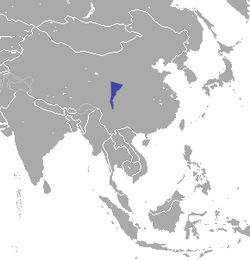 | Size: 4–10 cm (2–4 in) long, plus 2–9 cm (1–4 in) tail [102]
Habitat: Rocky areas [124]
Diet: Insects, worms, and other invertebrates, as well as small vertebrates, carrion, and plants [104] | DD
Unknown  [124] [124]
|
|---|
| Cinereus shrew  | S. cinereus
Kerr, 1792 | Northern North America
 | Size: 4–10 cm (2–4 in) long, plus 2–9 cm (1–4 in) tail [102]
Habitat: Forest, shrubland, grassland, and inland wetlands [125]
Diet: A variety of invertebrates, as well as seeds and fungi [126] | LC
Unknown  [125] [125]
|
|---|
| Common shrew  | S. araneus
Linnaeus, 1758 | Europe and Asia
 | Size: 4–10 cm (2–4 in) long, plus 2–9 cm (1–4 in) tail [102]
Habitat: Forest, shrubland, inland wetlands, and coastal marine [127]
Diet: Insects and other invertebrates [128] | LC
Unknown  [127] [127]
|
|---|
| Crowned shrew  | S. coronatus
Millet, 1828 | Western Europe
 | Size: 4–10 cm (2–4 in) long, plus 2–9 cm (1–4 in) tail [102]
Habitat: Forest, shrubland, and inland wetlands [129]
Diet: Insects, worms, and other invertebrates, as well as small vertebrates, carrion, and plants [104] | LC
Unknown  [129] [129]
|
|---|
| Dwarf shrew
| S. nanus
Merriam, 1895 | Central United States
 | Size: 4–10 cm (2–4 in) long, plus 2–9 cm (1–4 in) tail [102]
Habitat: Rocky areas, inland wetlands, grassland, and forest [130]
Diet: Insects and other invertebrates, as well as plants and small vertebrates [130] | LC
Unknown  [130] [130]
|
|---|
| Eurasian least shrew  | S. minutissimus
Zimmermann, 1780 | Norther Europe and northern Asia
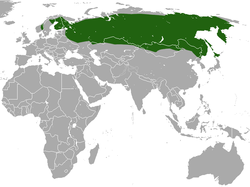 | Size: 4–10 cm (2–4 in) long, plus 2–9 cm (1–4 in) tail [102]
Habitat: Forest and grassland [131]
Diet: Insects and other invertebrates [131] | LC
Unknown  [131] [131]
|
|---|
| Eurasian pygmy shrew  | S. minutus
Linnaeus, 1766 | Europe and Asia
 | Size: 3–6 cm (1–2 in) long, plus 3–5 cm (1–2 in) tail [132]
Habitat: Forest, shrubland, grassland, inland wetlands, and coastal marine [133]
Diet: Insects and other invertebrates [132] | LC
Unknown  [133] [133]
|
|---|
| Flat-skulled shrew
| S. roboratus
Hollister, 1913 | Northern Asia
 | Size: 4–10 cm (2–4 in) long, plus 2–9 cm (1–4 in) tail [102]
Habitat: Forest [134]
Diet: Insects [134] | LC
Unknown  [134] [134]
|
|---|
| Fog shrew
| S. sonomae
Jackson, 1921
- S. s. sonomae
- S. s. tenelliodus
| Western North America
 | Size: 4–10 cm (2–4 in) long, plus 2–9 cm (1–4 in) tail [102]
Habitat: Forest and inland wetlands [135]
Diet: Insects and other invertebrates [135] | LC
Unknown  [135] [135]
|
|---|
| Gansu shrew
| S. cansulus
Thomas, 1912 | Central China
 | Size: 4–10 cm (2–4 in) long, plus 2–9 cm (1–4 in) tail [102]
Habitat: Unknown [136]
Diet: Insects, worms, and other invertebrates, as well as small vertebrates, carrion, and plants [104] | DD
Unknown  [136] [136]
|
|---|
| Glacier Bay water shrew
| S. alaskanus
Merriam, 1900 | Western Canada
 | Size: 4–10 cm (2–4 in) long, plus 2–9 cm (1–4 in) tail [102]
Habitat: Inland wetlands [137]
Diet: Insects, worms, and other invertebrates, as well as small vertebrates, carrion, and plants [104] | DD
Unknown  [137] [137]
|
|---|
| Greater stripe-backed shrew
| S. cylindricauda
H. Milne-Edwards, 1872 | Central China
 | Size: 4–10 cm (2–4 in) long, plus 2–9 cm (1–4 in) tail [102]
Habitat: Forest [138]
Diet: Insects, worms, and other invertebrates, as well as small vertebrates, carrion, and plants [104] | LC
Unknown  [138] [138]
|
|---|
| Iberian shrew  | S. granarius
Miller, 1910 | Portugal and Spain
 | Size: 4–10 cm (2–4 in) long, plus 2–9 cm (1–4 in) tail [102]
Habitat: Forest, shrubland, and rocky areas [139]
Diet: Insects, worms, and other invertebrates, as well as small vertebrates, carrion, and plants [104] | LC
Unknown  [139] [139]
|
|---|
| Inyo shrew  | S. tenellus
Merriam, 1895 | Western United States
 | Size: 4–10 cm (2–4 in) long, plus 2–9 cm (1–4 in) tail [102]
Habitat: Forest, shrubland, inland wetlands, and rocky areas [140]
Diet: Insects and other invertebrates [140] | LC
Unknown  [140] [140]
|
|---|
| Ixtlan shrew
| S. ixtlanensis
Carraway, 2007 | Southern Mexico | Size: 4–10 cm (2–4 in) long, plus 2–9 cm (1–4 in) tail [102]
Habitat: Forest [141]
Diet: Insects, worms, and other invertebrates, as well as small vertebrates, carrion, and plants [104] | DD
Unknown  [141] [141]
|
|---|
| Jalisco shrew
| S. mediopua
Carraway, 2007 | Southern Mexico | Size: 4–10 cm (2–4 in) long, plus 2–9 cm (1–4 in) tail [102]
Habitat: Forest [142]
Diet: Insects, worms, and other invertebrates, as well as small vertebrates, carrion, and plants [104] | LC
Unknown  [142] [142]
|
|---|
| Kamchatka shrew
| S. camtschatica
Yudin, 1972 | Eastern Russia
 | Size: 4–10 cm (2–4 in) long, plus 2–9 cm (1–4 in) tail [102]
Habitat: Shrubland [143]
Diet: Insects, worms, and other invertebrates, as well as small vertebrates, carrion, and plants [104] | LC
Unknown  [143] [143]
|
|---|
| Kashmir pygmy shrew
| S. planiceps
Miller, 1911 | Northern India and Pakistan
 | Size: 4–10 cm (2–4 in) long, plus 2–9 cm (1–4 in) tail [102]
Habitat: Forest and rocky areas [144]
Diet: Insects, worms, and other invertebrates, as well as small vertebrates, carrion, and plants [104] | LC
Unknown  [144] [144]
|
|---|
| Kozlov's shrew
| S. kozlovi
Stroganov, 1952 | South-central China
 | Size: 4–10 cm (2–4 in) long, plus 2–9 cm (1–4 in) tail [102]
Habitat: Unknown [145]
Diet: Insects, worms, and other invertebrates, as well as small vertebrates, carrion, and plants [104] | DD
Unknown  [145] [145]
|
|---|
| Large-toothed shrew
| S. macrodon
Merriam, 1895 | Southern Mexico
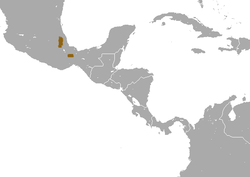 | Size: 4–10 cm (2–4 in) long, plus 2–9 cm (1–4 in) tail [102]
Habitat: Forest [146]
Diet: Insects, worms, and other invertebrates, as well as small vertebrates, carrion, and plants [104] | VU
Unknown  [146] [146]
|
|---|
| Laxmann's shrew  | S. caecutiens
Laxmann, 1788 | Northern Europe and northern Asia
 | Size: 4–10 cm (2–4 in) long, plus 2–9 cm (1–4 in) tail [102]
Habitat: Forest, shrubland, and inland wetlands [147]
Diet: Insects and other invertebrates [147] | LC
Unknown  [147] [147]
|
|---|
| Lesser striped shrew
| S. bedfordiae
Thomas, 1911 | Central China and southern Asia
 | Size: 4–10 cm (2–4 in) long, plus 2–9 cm (1–4 in) tail [102]
Habitat: Forest and grassland [148]
Diet: Insects [148] | LC
Unknown  [148] [148]
|
|---|
| Long-clawed shrew  | S. unguiculatus
Dobson, 1890 | Eastern Asia
 | Size: 4–10 cm (2–4 in) long, plus 2–9 cm (1–4 in) tail [102]
Habitat: Forest and grassland [149]
Diet: Insects and other invertebrates [149] | LC
Unknown  [149] [149]
|
|---|
| Long-tailed shrew  | S. dispar
Batchelder, 1911 | Eastern North America
 | Size: 4–10 cm (2–4 in) long, plus 2–9 cm (1–4 in) tail [150]
Habitat: Forest, inland wetlands, and rocky areas [151]
Diet: Small invertebrates and plants [150] | LC
Unknown  [151] [151]
|
|---|
| Maritime shrew
| S. maritimensis
Smith, 1939 | Eastern Canada
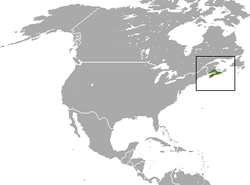 | Size: 4–10 cm (2–4 in) long, plus 2–9 cm (1–4 in) tail [102]
Habitat: Forest, inland wetlands, and unknown [152]
Diet: Insects, worms, and other invertebrates, as well as small vertebrates, carrion, and plants [104] | LC
Unknown  [152] [152]
|
|---|
| Marsh shrew  | S. bendirii
Merriam, 1884 | Western North America
 | Size: 4–10 cm (2–4 in) long, plus 2–9 cm (1–4 in) tail [102]
Habitat: Forest and inland wetlands [153]
Diet: Insects [153] | LC
Unknown  [153] [153]
|
|---|
| Merriam's shrew  | S. merriami
Dobson, 1890 | Western United States
 | Size: 5–7 cm (2–3 in) long, plus 3–5 cm (1–2 in) tail [154]
Habitat: Forest, shrubland, and grassland [155]
Diet: Insects and other invertebrates, as well as small vertebrates [154] | LC
Unknown  [155] [155]
|
|---|
| Mexican long-tailed shrew
| S. oreopolus
Merriam, 1892 | Southern Mexico
 | Size: 4–10 cm (2–4 in) long, plus 2–9 cm (1–4 in) tail [102]
Habitat: Forest and grassland [156]
Diet: Insects, worms, and other invertebrates, as well as small vertebrates, carrion, and plants [104] | LC
Unknown  [156] [156]
|
|---|
| Montane shrew  | S. monticolus
Merriam, 1890 | Western North America
 | Size: 6–8 cm (2–3 in) long, plus 4–7 cm (2–3 in) tail [157]
Habitat: Forest, grassland, and inland wetlands [158]
Diet: Insects and other invertebrates, as well as salamanders, seeds, lichen, and fungi [157] | LC
Unknown  [158] [158]
|
|---|
| Mount Lyell shrew
| S. lyelli
Merriam, 1902 | Western United States
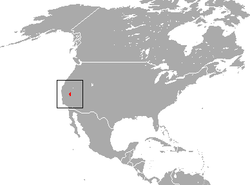 | Size: 4–10 cm (2–4 in) long, plus 2–9 cm (1–4 in) tail [102]
Habitat: Shrubland, grassland, and inland wetlands [159]
Diet: Insects [159] | LC
Unknown  [159] [159]
|
|---|
| New Mexico shrew
| S. neomexicanus
Bailey, 1913 | Southern United States
 | Size: 4–10 cm (2–4 in) long, plus 2–9 cm (1–4 in) tail [102]
Habitat: Forest and grassland [160]
Diet: Insects, worms, and other invertebrates, as well as small vertebrates, carrion, and plants [104] | DD
Unknown  [160] [160]
|
|---|
| Orizaba long-tailed shrew
| S. orizabae
Merriam, 1895 | Central Mexico
 | Size: 4–10 cm (2–4 in) long, plus 2–9 cm (1–4 in) tail [102]
Habitat: Forest and grassland [161]
Diet: Insects, worms, and other invertebrates, as well as small vertebrates, carrion, and plants [104] | LC
Unknown  [161] [161]
|
|---|
| Ornate shrew  | S. ornatus
Merriam, 1895
- S. o. juncensis (Tule shrew)
- S. o. lagunae
- S. o. ornatus
- S. o. relictus
- S. o. salarius
- S. o. salicornicus
- S. o. willetti
- S. o. sinuosus (Suisun shrew)
| Western North America
 | Size: 4–10 cm (2–4 in) long, plus 2–9 cm (1–4 in) tail [102]
Habitat: Forest, shrubland, grassland, and inland wetlands [162]
Diet: Insects, worms, and other invertebrates, as well as small vertebrates, carrion, and plants [104] | LC
Unknown  [162] [162]
|
|---|
| Pacific shrew
| S. pacificus
Coues, 1877
- S. p. cascadensis
- S. p. pacificus
| Western United States
 | Size: 8–9 cm (3–4 in) long, plus 5–8 cm (2–3 in) tail [163]
Habitat: Forest [164]
Diet: Insects, other invertebrates, and amphibians, as well as plants and fungi [163] | LC
Unknown  [164] [164]
|
|---|
| Paramushir shrew
| S. leucogaster
Kuroda, 1933 | Eastern Russia
 | Size: 4–10 cm (2–4 in) long, plus 2–9 cm (1–4 in) tail [102]
Habitat: Shrubland [165]
Diet: Insects, worms, and other invertebrates, as well as small vertebrates, carrion, and plants [104] | DD
Unknown  [165] [165]
|
|---|
| Portenko's shrew
| S. portenkoi
Stroganov, 1956 | Eastern Russia
 | Size: 4–10 cm (2–4 in) long, plus 2–9 cm (1–4 in) tail [102]
Habitat: Grassland [166]
Diet: Insects, worms, and other invertebrates, as well as small vertebrates, carrion, and plants [104] | DD
Unknown  [166] [166]
|
|---|
| Prairie shrew
| S. haydeni
Baird, 1857 | Central North America
 | Size: 4–10 cm (2–4 in) long, plus 2–9 cm (1–4 in) tail [102]
Habitat: Forest, shrubland, grassland, and inland wetlands [167]
Diet: Insects and other invertebrates, as well as small vertebrates and plants [167] | LC
Unknown  [167] [167]
|
|---|
| Preble's shrew
| S. preblei
Jackson, 1922 | Northwestern United States
 | Size: 4–10 cm (2–4 in) long, plus 2–9 cm (1–4 in) tail [102]
Habitat: Forest, shrubland, grassland, inland wetlands, and desert [168]
Diet: Insects [168] | LC
Unknown  [168] [168]
|
|---|
| Pribilof Island shrew
| S. pribilofensis
Merriam, 1895 | Pribilof Islands in Alaska
 | Size: 4–10 cm (2–4 in) long, plus 2–9 cm (1–4 in) tail [102]
Habitat: Grassland and coastal marine [169]
Diet: Insects, worms, and other invertebrates, as well as small vertebrates, carrion, and plants [104] | EN
Unknown  [169] [169]
|
|---|
| Radde's shrew
| S. raddei
Satunin, 1895 | Western Asia
 | Size: 4–10 cm (2–4 in) long, plus 2–9 cm (1–4 in) tail [102]
Habitat: Forest and rocky areas [170]
Diet: Insects [170] | LC
Unknown  [170] [170]
|
|---|
| Saint Lawrence Island shrew
| S. jacksoni
Hall & Gilmore, 1932 | St. Lawrence Island in Alaska
 | Size: 4–10 cm (2–4 in) long, plus 2–9 cm (1–4 in) tail [102]
Habitat: Grassland, inland wetlands, and rocky areas [171]
Diet: Insects [171] | LC
Unknown  [171] [171]
|
|---|
| San Cristobal shrew
| S. stizodon
Merriam, 1895 | Southeastern Mexico
 | Size: 4–10 cm (2–4 in) long, plus 2–9 cm (1–4 in) tail [102]
Habitat: Forest [172]
Diet: Insects, worms, and other invertebrates, as well as small vertebrates, carrion, and plants [104] | CR
Unknown  [172] [172]
|
|---|
| Saussure's shrew
| S. saussurei
Merriam, 1892 | Southern Mexico and Guatemala
 | Size: 4–10 cm (2–4 in) long, plus 2–9 cm (1–4 in) tail [102]
Habitat: Forest [173]
Diet: Insects, worms, and other invertebrates, as well as small vertebrates, carrion, and plants [104] | LC
Unknown  [173] [173]
|
|---|
| Sclater's shrew
| S. sclateri
Merriam, 1897 | Southern Mexico and Guatemala
 | Size: 4–10 cm (2–4 in) long, plus 2–9 cm (1–4 in) tail [102]
Habitat: Forest
Diet: Insects, worms, and other invertebrates, as well as small vertebrates, carrion, and plants [104] | CR
Unknown 
|
|---|
| Shinto shrew
| S. shinto
Thomas, 1905
- S. s. sadonis (Sado shrew)
- S. s. shikokensis
- S. s. shinto
| Japan
 | Size: 4–10 cm (2–4 in) long, plus 2–9 cm (1–4 in) tail [102]
Habitat: Forest and shrubland [175]
Diet: Insects, worms, and other invertebrates, as well as small vertebrates, carrion, and plants [104] | LC
Unknown  [175] [175]
|
|---|
| Siberian large-toothed shrew
| S. daphaenodon
Thomas, 1907 | Northern Asia
 | Size: 4–10 cm (2–4 in) long, plus 2–9 cm (1–4 in) tail [102]
Habitat: Inland wetlands and forest [176]
Diet: Insects and other invertebrates [176] | LC
Unknown  [176] [176]
|
|---|
| Slender shrew
| S. gracillimus
Thomas, 1907
- S. g. gracillimus
- S. g. granti
- S. g. minor
- S. g. natalae
| Eastern Asia
 | Size: 4–10 cm (2–4 in) long, plus 2–9 cm (1–4 in) tail [102]
Habitat: Forest and grassland [177]
Diet: Invertebrates [177] | LC
Unknown  [177] [177]
|
|---|
| Smoky shrew  | S. fumeus
Miller, 1895 | Eastern North America
 | Size: 4–10 cm (2–4 in) long, plus 2–9 cm (1–4 in) tail [102]
Habitat: Forest and shrubland [178]
Diet: Invertebrates, as well as salamanders and fungi [179] | LC
Unknown  [178] [178]
|
|---|
| Southeastern shrew  | S. longirostris
Bachman, 1837
- S. l. eonis
- S. l. fisheri (Dismal Swamp southeastern shrew)
- S. l. longirostris
| Eastern United States
 | Size: 4–6 cm (2–2 in) long, plus 2–4 cm (1–2 in) tail [180]
Habitat: Inland wetlands, grassland, shrubland, and forest [181]
Diet: Insects and other invertebrates as well as seeds [180] | LC
Unknown  [181] [181]
|
|---|
| Taiga shrew
| S. isodon
Turov, 1924 | Northern Europe and northern Asia
 | Size: 4–10 cm (2–4 in) long, plus 2–9 cm (1–4 in) tail [102]
Habitat: Forest and shrubland [182]
Diet: Insects, worms, and other invertebrates, as well as small vertebrates, carrion, and plants [104] | LC
Unknown  [182] [182]
|
|---|
| Tibetan shrew
| S. thibetanus
Kaschtschenko, 1905 | Central China
 | Size: 4–10 cm (2–4 in) long, plus 2–9 cm (1–4 in) tail [102]
Habitat: Forest, shrubland, and grassland [183]
Diet: Insects, worms, and other invertebrates, as well as small vertebrates, carrion, and plants [104] | DD
Unknown  [183] [183]
|
|---|
| Tien Shan shrew
| S. asper
Thomas, 1914 | Central Asia
 | Size: 4–10 cm (2–4 in) long, plus 2–9 cm (1–4 in) tail [102]
Habitat: Forest and shrubland [184]
Diet: Insects and other invertebrates [184] | LC
Unknown  [184] [184]
|
|---|
| Trowbridge's shrew  | S. trowbridgii
Baird, 1857 | Western North America
 | Size: 4–10 cm (2–4 in) long, plus 2–9 cm (1–4 in) tail [102]
Habitat: Forest, shrubland, and inland wetlands [185]
Diet: Insects and other invertebrates [185] | LC
Unknown  [185] [185]
|
|---|
| Tundra shrew  | S. tundrensis
Merriam, 1900 | Asia and western North America
 | Size: 8–12 cm (3–5 in) long, plus 2–4 cm (1–2 in) tail [186]
Habitat: Forest, grassland, and inland wetlands [187]
Diet: Insects, other invertebrates, and flowers [186] | LC
Unknown  [187] [187]
|
|---|
| Ussuri shrew
| S. mirabilis
Ognew, 1937 | Eastern Asia
 | Size: 4–10 cm (2–4 in) long, plus 2–9 cm (1–4 in) tail [102]
Habitat: Forest [188]
Diet: Insects, worms, and other invertebrates, as well as small vertebrates, carrion, and plants [104] | DD
Unknown  [188] [188]
|
|---|
| Vagrant shrew  | S. vagrans
Baird, 1857 | Western North America
 | Size: 4–10 cm (2–4 in) long, plus 2–9 cm (1–4 in) tail [102]
Habitat: Forest and inland wetlands [189]
Diet: Insects and other invertebrates [189] | LC
Unknown  [189] [189]
|
|---|
| Valais shrew  | S. antinorii
Bonaparte, 1840 | Southern Europe
 | Size: 4–10 cm (2–4 in) long, plus 2–9 cm (1–4 in) tail [102]
Habitat: Inland wetlands [190]
Diet: Insects, worms, and other invertebrates, as well as small vertebrates, carrion, and plants [104] | LC
Unknown  [190] [190]
|
|---|
| Veracruz shrew
| S. veraecrucis
Jackson, 1925 | Mexico
 | Size: 4–10 cm (2–4 in) long, plus 2–9 cm (1–4 in) tail [102]
Habitat: Forest [191]
Diet: Insects, worms, and other invertebrates, as well as small vertebrates, carrion, and plants [104] | LC
Unknown  [191] [191]
|
|---|
| Verapaz shrew
| S. veraepacis
Alston, 1877
- S. v. chiapensis
- S. v. mutabilis
- S. v. veraepacis
| Southern Mexico and Guatemala
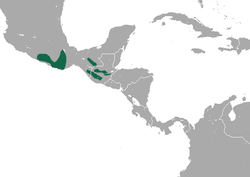 | Size: 4–10 cm (2–4 in) long, plus 2–9 cm (1–4 in) tail [102]
Habitat: Forest [192]
Diet: Insects, worms, and other invertebrates, as well as small vertebrates, carrion, and plants [104] | LC
Unknown  [192] [192]
|
|---|
| Zacatecas shrew
| S. emarginatus
Jackson, 1925 | Central Mexico
 | Size: 4–10 cm (2–4 in) long, plus 2–9 cm (1–4 in) tail [102]
Habitat: Forest [193]
Diet: Insects, worms, and other invertebrates, as well as small vertebrates, carrion, and plants [104] | LC
Unknown  [193] [193]
|
|---|















































































































































































